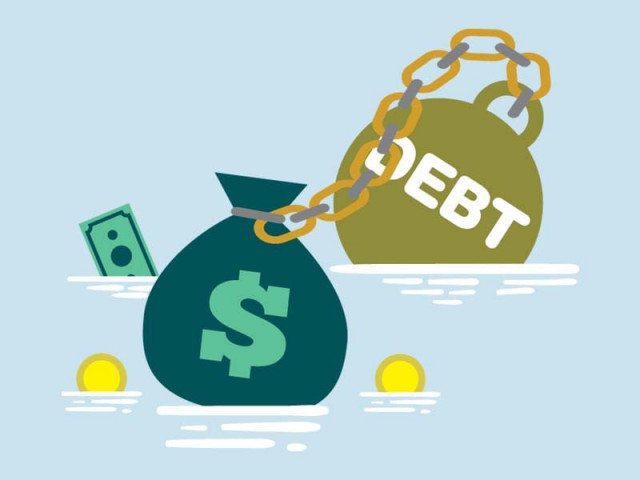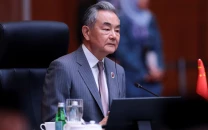Despite increase in tariff, circular debt skyrockets to Rs2.6tr
Average per month increase during Jul-Feb FY22-23 was Rs52.4 billion

The coalition government has added a net Rs419 billion to the power sector circular debt during the first eight months of this fiscal year, pushing the total circular debt to Rs2.67 trillion despite significantly increasing electricity prices last year.
The average per month increase in circular debt during the July-February period, of FY2022-23, was a colossal Rs52.4 billion, according to sources in the Ministry of Finance and Ministry of Energy.
The stock of circular debt at the beginning of the fiscal year was Rs2.253 trillion, which mushroomed to Rs2.67 trillion, they added. As part of the condition set by the International Monetary Fund (IMF) and World Bank, the coalition government increased electricity prices by Rs7.91 per unit in July last year. The move, however, failed to stem the growth of circular debt.
Sources said that the payables to power producers have jumped from Rs1.35 trillion in June last year to Rs1.8 trillion at the end of February –a surge of Rs456 billion or over one-third. But the stock of circular debt was reduced by Rs35 billion to Rs765 billion during the period under review. Another Rs99 billion was added on account of payables to fuel suppliers.
There have not been many efforts to reduce line losses and theft, which is also playing a significant role in increasing circular debt.
Of the Rs419 billion additions in circular debt, an increase of Rs232 billion, i.e., 55%, was because of inefficiency and losses by power distribution companies and lower recovery of bills. The government added Rs59 billion to circular debt on account of losses by power distribution companies. The low recovery of bills added Rs173 billion to circular debt during the July-February 2023 period.
Under the revised Circular Debt Management Plan, the Power Division had informed the IMF and World Bank that it would make monthly circular debt reports public aimed at ensuring transparency and tracking performance. However, the Power Division violated this commitment, apparently because of poor performance.
Last week, the Ministry of Finance gave subsidies worth Rs103 billion to partly lower the debt. The Rs103 billion unbudgeted subsidy is the first tranche of additional power subsidies worth Rs335 billion that Islamabad had agreed to pay under an understanding with the IMF in February, according to government sources.
For the current fiscal year, the government had budgeted Rs570 billion in power subsidies, which after a recent understanding with the IMF, will now surge to a minimum of Rs905 billion.
Power sector losses are on the rise despite a significant increase in prices. In February, the government approved increasing electricity prices again in the range of Rs3.3 to Rs15.52 per unit for residential consumers, farmers and exporters.
The revised circular debt management plan showed that despite a significant increase in prices, and an additional Rs335 billion subsidy, the circular debt stock will jump to Rs2.37 trillion by June this year. While comparing with end-February, the government has to reduce circular debt by Rs297 billion to achieve the upward revised target.
At the time of signing the $6 billion bailout package, the IMF had allowed Pakistan to add only Rs39 billion to circular debt during the July-December 2019 period, and from December onwards Pakistan was required to keep the flow zero – a goal that was not achieved by repeatedly increasing prices.
But the Ministry of Energy officials believed that the impact of increasing the electricity prices in the past eight months, including the fresh surge, would be fully reflected in the remaining period of the current fiscal year, which would help restrict the increase in debt.
Details showed that an amount of Rs105 billion was added to circular debt during the past eight months due to a delay in releasing the electricity subsidies.
A sum of Rs73 billion was added to circular debt due to payments of interest to power producers on delayed payments. The government now owes Rs1.8 trillion to these producers and its failure to make payments is adding more to the debt.
Another Rs35 billion was added to circular debt on account of payment of interest to banks on the Rs765 billion parked in a power holding company. The government has now imposed a Rs3.23 per unit debt servicing surcharge to address this issue –which is tantamount to passing on the cost of its inefficiency to power consumers.
Sources said that additions of Rs95 billion to circular debt were on account of delays in recovery of generation cost through quarterly and monthly fuel charges. The non-payment of K-Electric subsidies also added Rs119 billion to the debt stock. However, the accumulation of debt on these two counts might be partly addressed after a fresh increase in prices and the finance ministry’s commitment to providing Rs335 billion in additional subsidies.
Gross increase in circular debt was Rs659 billion in eight months but Rs240 billion were net-off through other means. This reduction was on account of partial payment of subsidies of Rs33 billion prior years’ recoveries of Rs140 billion, Rs65 billion principal repayments and Rs31 billion worth of stock payments, said the sources.
Published in The Express Tribune, April 8th, 2023.
Like Business on Facebook, follow @TribuneBiz on Twitter to stay informed and join in the conversation.



















COMMENTS
Comments are moderated and generally will be posted if they are on-topic and not abusive.
For more information, please see our Comments FAQ